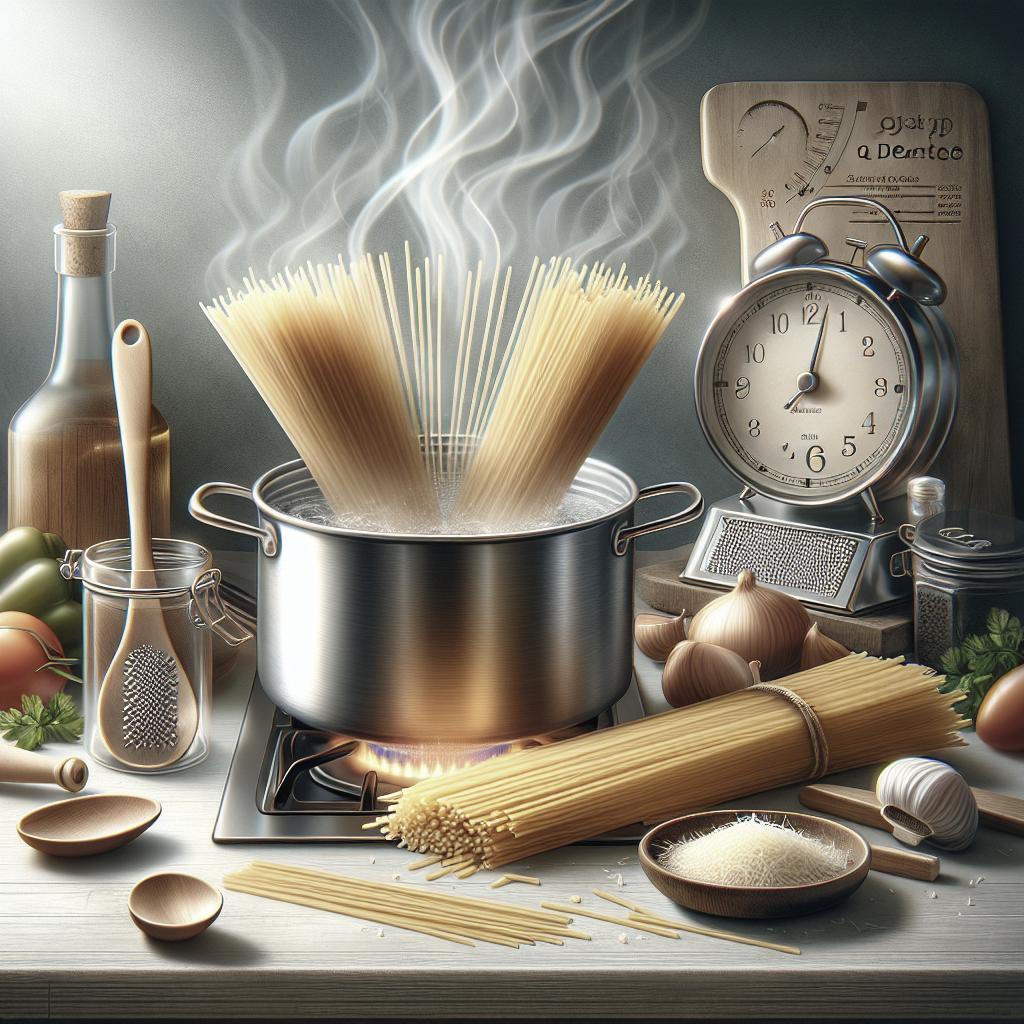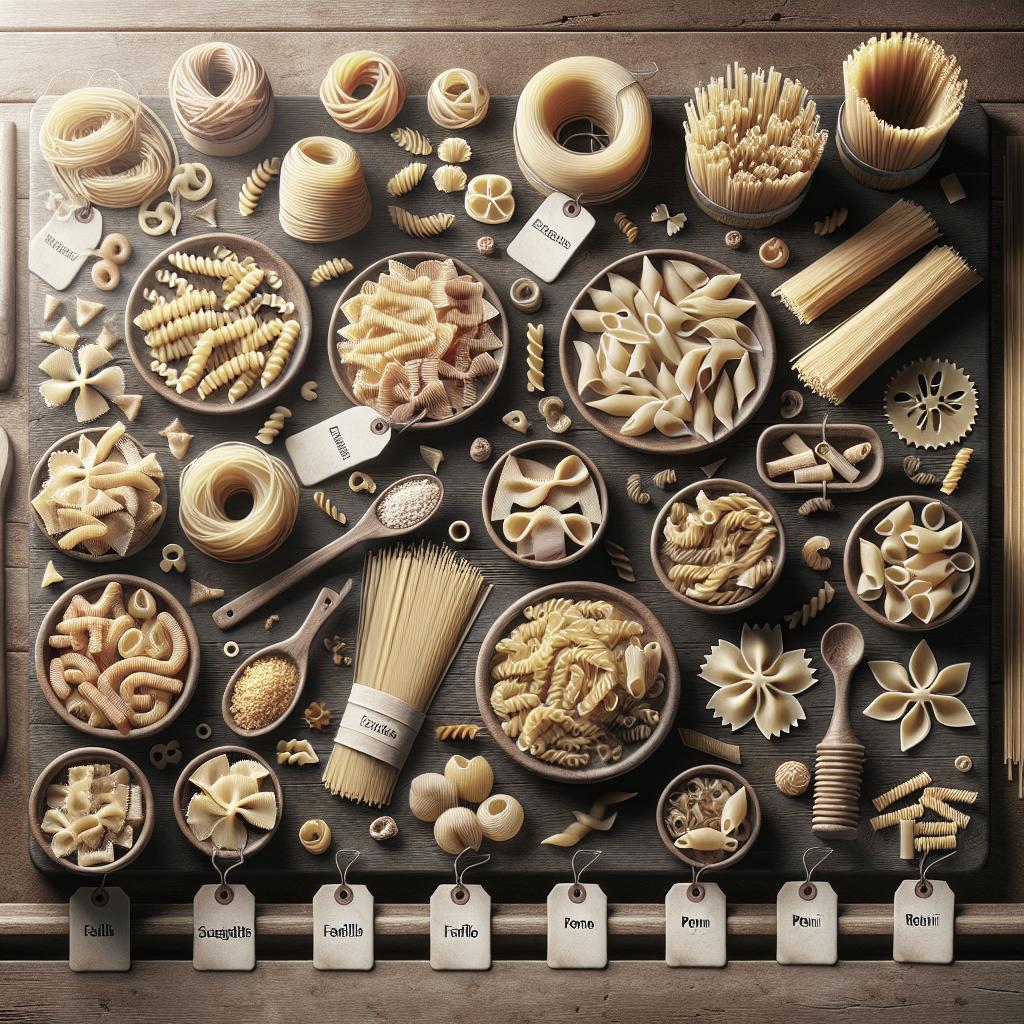“`html
How to Make Pasta Al Dente
Learning to cook pasta al dente is a quintessential culinary skill, crucial for any pasta enthusiast or home cook. The term “al dente” refers to pasta cooked to be firm to the bite, providing a delightful texture that complements any sauce or seasoning. In this guide, we will delve into what you need to prepare the perfect al dente pasta, step-by-step cooking instructions, valuable tips to achieve that ideal texture, and some mouth-watering Italian recipes to pair with your pasta. Discover the techniques that will elevate your pasta dishes from average to restaurant-quality.
Ingredients
To make perfect al dente pasta, the ingredients are straightforward and minimal. You will need pasta of your choice—be it spaghetti, penne, fettuccine, or fusilli. It’s important to choose high-quality pasta as it will significantly impact the final texture. Additionally, you’ll require a generous amount of water and salt.
The key ingredient here is the water. While it may seem simple, the right amount of water is critical to giving your pasta room to move freely and cook evenly. It’s best to use at least four to six quarts of water for every pound of pasta. The salt adds flavor to the pasta itself, rather than just seasoning the sauce that goes with it.
How to Make Al Dente Pasta
Understanding the nuances of “al dente” is essential. Pasta cooked al dente should be tender yet firm enough to resist a bit of pressure when you bite into it. It should have a texture that provides a pleasant chew without being undercooked.
Al dente pasta retains a slight rigidity at the core, making it perfect for absorbing sauces without becoming mushy. This can often be a subjective matter, but a general rule is to cook the pasta until it is firm yet not hard, often a minute or two less than the package instructions indicate.
How to Cook Pasta Step-by-Step
Begin by bringing a large pot of water to a rolling boil. For every pound of pasta, at least six quarts of water are ideal. Add a tablespoon or more of salt to the boiling water; this is crucial for enhancing the pasta’s flavor.
Once the water is boiling, add the pasta and stir occasionally to prevent sticking. Test the pasta a minute or two before the package indicates it’s done. To do this, take a piece, cool it quickly, and taste. If it’s chewy with a slight firmness, it’s perfect! Once cooked to al dente, swiftly drain the pasta in a colander.
Pasta Cooking Tips
Avoid rinsing your pasta with water after draining, as this washes away the starch that helps sauces adhere to the pasta. Additionally, keep a cup of pasta water aside before draining to use in sauces; this starchy liquid can enhance the sauce’s consistency.
Timing is critical when planning a meal. Always coordinate the cooking of pasta with the preparation of its accompanying sauce. Having your sauce hot and ready ensures that the pasta can be mixed immediately to avoid sticking.
Recipe
Favorite Pasta Sauce Recipes
A classic marinara or a rich Alfredo sauce will pair beautifully with your al dente pasta. For a lighter option, try a garlic and olive oil sauce or a fresh pesto for a burst of flavor.
Instructions
1. Begin by boiling a large pot of salted water.
2. Add your pasta and cook it until it’s al dente. Start testing a couple of minutes before the time on the package instructions.
3. Reserve some pasta water before draining.
4. Drain the pasta and immediately combine with your desired hot sauce. Use reserved pasta water if the sauce needs thinning.
5. Serve immediately with garnishes like parmesan or herbs if desired.
Recipe FAQs
Q: How can I tell if pasta is al dente?
A: The pasta should be tender yet firm to the bite. It shouldn’t be crunchy, but it should not be mushy either.
Q: Can I make gluten-free pasta al dente?
A: Yes, gluten-free pasta can be cooked al dente, although it may take a bit of practice as the texture is different from traditional pasta.
More Italian Recipes
For those who love Italian cuisine, continue expanding your repertoire by exploring other classic recipes such as Risotto alla Milanese, Caprese Salad, or the simple yet delightful Bruschetta. Each dish offers a unique taste of Italy’s rich culinary tradition.
Mastering these recipes not only enriches your dining experiences but also fosters a deeper appreciation for one of the most beloved cuisines in the world.
Lessons Learned
| Topic | Key Points |
|---|---|
| Ingredients | Quality pasta, ample water, and salt are important. |
| Cooking Pasta | Al dente means firm yet tender; cook slightly less than package instructions suggest. |
| Pasta Tips | Don’t rinse pasta; save pasta water for sauces. |
| Recipe | Boil, test, drain, and serve with your favorite sauce immediately. |
“`


